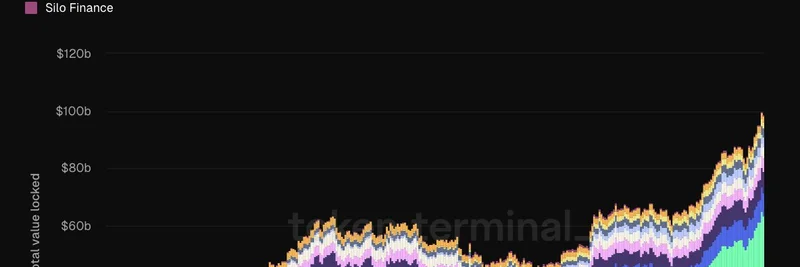In the fast-paced world of decentralized finance (DeFi), big milestones are becoming the norm, and the latest one is a doozy. Onchain banking liquidity has just crossed the $100 billion threshold for the first time ever. That's right—$100B in total deposits locked into lending protocols across the blockchain ecosystem. This surge highlights how DeFi is maturing into a serious alternative to traditional banking, and it's got implications for everyone from hardcore crypto traders to meme token fans looking to leverage their holdings.
The news comes from a recent tweet by David Alexander II, a partner at Anagram and former Managing Director at Binance Labs. He points out that Aave, one of the leading DeFi lending platforms, is holding a whopping $63B in deposits all by itself. To put that in perspective, that's more than some major traditional banks like Barclays ($45B) or Deutsche Bank ($40B). If Aave were a U.S.-chartered commercial bank, it'd rank in the top 40. Pretty wild, huh?
Breaking Down the Numbers
The tweet dives into the details, listing nine protocols that each have at least $2B in total deposits. Here's the rundown:
- Aave: $63B – The undisputed leader, offering lending and borrowing with features like flash loans that let users borrow without collateral for super short periods.
- Morpho: $8B – A newer player optimizing lending efficiency through peer-to-peer matching.
- Spark: $7.6B – Focused on high-yield opportunities, especially in stablecoin lending.
- Kamino Finance: $4.5B – Popular on Solana, blending lending with automated portfolio management.
- Compound Finance: $4.1B – One of the OGs in DeFi lending, where users earn interest on supplied assets.
- Maple Finance: $3.3B – Targets institutional lending with undercollateralized loans for creditworthy borrowers.
- Fluid: $3.1B – Emphasizes liquidity provision and yield farming integrations.
- Euler Finance: $2.3B – Known for permissionless lending markets and risk management tools.
- Venus Protocol: $2.2B – Built on BNB Chain, supporting a wide range of assets including stablecoins.
Overall, there's now over $42B in active loans onchain. Compared to earlier in the year—back in April, when aggregate active loans were around $15B—this represents massive growth. Liquidity available for borrowing has also spiked to $38.4B, with utilization rates hovering around 39%. These figures come courtesy of Token Terminal, a go-to source for crypto analytics.
Why This Matters for Meme Token Enthusiasts
You might be wondering: What's this got to do with meme tokens? Well, in the meme coin world, where volatility is king and quick trades can make or break fortunes, access to liquidity is everything. These lending protocols allow users to borrow against their holdings without selling, meaning you can leverage your DOGE, PEPE, or whatever hot meme token is trending to grab more assets or chase yields elsewhere.
For instance, if you're holding a bag of meme coins and spot a new pump incoming, you could deposit them as collateral on Aave or Compound to borrow stablecoins like USDC. Then, use that to buy into the action without liquidating your position. It's like having a crypto credit line at your fingertips. Plus, with treasury strategies and strategic reserves from big players yet to fully deploy, expect even more capital flowing in, potentially fueling bigger meme token rallies and more innovative DeFi plays.
This milestone also signals broader adoption. As onchain lending grows, it attracts more institutional money, which stabilizes the market and creates safer environments for retail users—including those dipping into memes for fun and profit. But remember, DeFi isn't without risks: smart contract vulnerabilities, liquidation events during market dips, and regulatory scrutiny are all part of the game. Always do your own research (DYOR) before diving in.
Looking Ahead
David wraps up his tweet with a simple "Buckle up," and he's spot on. With onchain liquidity exploding, we're likely to see more integration between lending protocols and other DeFi sectors, like decentralized exchanges (DEXs) and yield aggregators. For meme token projects, this could mean easier access to funding for launches or community incentives.
If you're keen to explore, check out platforms like Aave or Token Terminal for real-time data. Stay tuned to Meme Insider for more updates on how DeFi trends are intersecting with the wild world of meme coins. What's your take on this liquidity boom? Drop a comment below!



